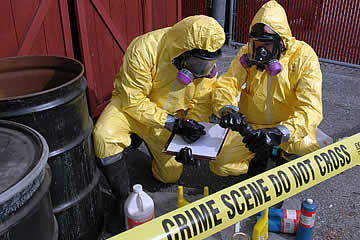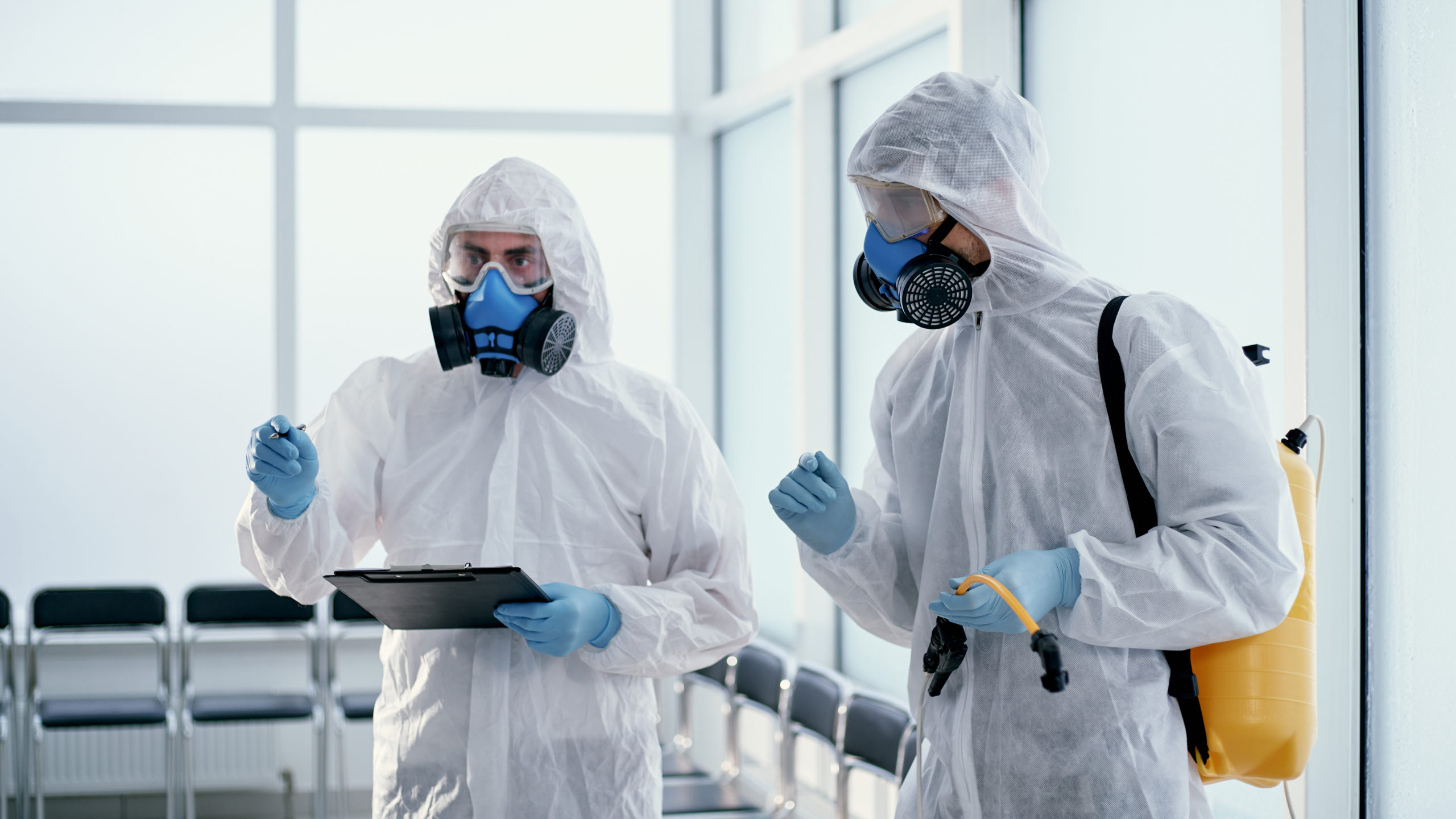Decomposition Death Clean Up: Specialized and Respectful Remediation
Decomposition Death Clean Up: Specialized and Respectful Remediation
Blog Article
Expert Biohazard Cleaning and Decontamination for Blood, Bodily Fluids, and Hazardous Products
The possible health risks associated with exposure to biohazards highlight the crucial requirement for meticulous handling and detailed cleanup. As we navigate the complex landscape of biohazard clean-up, comprehending the subtleties of guidelines, conformity, and the specific tools at play ends up being important in ensuring a comprehensive and secure purification process.
Wellness Risks of Biohazard Exposure
Direct exposure to biohazards poses considerable wellness risks that can result in serious effects for individuals and neighborhoods alike. Biohazards incorporate a variety of organic substances, including blood, physical fluids, mold and mildew, bacteria, infections, and various other potentially infectious materials. When individuals enter contact with these biohazards, whether via crashes, improper handling, or ecological exposure, they face the danger of having serious ailments or illness.
Among the main health and wellness threats connected with biohazard exposure is the transmission of contagious conditions. Bloodborne pathogens such as HIV, hepatitis B and C, and numerous germs can be present in biohazardous materials, posturing a direct threat to human health and wellness. Breathing in airborne biohazards like mold spores or coming into contact with contaminated surfaces can also cause respiratory problems, allergies, and various other unfavorable wellness impacts.
In addition, biohazard exposure can have long-term health ramifications, with some diseases showing up years after the first contact (Blood Cleanup). Consequently, it is vital to prioritize proper biohazard cleaning and purification to reduce these health threats and make certain the security of individuals and neighborhoods

Specialized Educating for Biohazard Clean-up
When it comes to handling biohazard cleanup efficiently and securely, specialized training plays an essential role in making certain proper purification procedures are followed. Biohazard cleaning needs particular understanding and abilities to properly minimize dangers linked with bloodborne pathogens, physical liquids, and unsafe materials. Professionals educated in biohazard clean-up undertake rigorous direction on just how to safely handle, get rid of, and take care of biohazardous materials to stop contamination and exposure.
Specialized training for biohazard clean-up covers an array of vital topics, including correct individual protective devices (PPE) use, bloodborne pathogen awareness, purification methods, and harmful waste disposal methods. People trained in biohazard cleaning are geared up with the necessary expertise to evaluate contamination levels, determine prospective dangers, and carry out ideal clean-up procedures in compliance with regulative standards.
Continual training and education and learning are paramount in the field of biohazard cleaning to stay updated on the most current decontamination technologies, security methods, and laws. By purchasing specialized training, biohazard cleaning specialists can successfully react to emergency situation cleaning circumstances and guard both public wellness and the atmosphere.
Importance of Appropriate Decontamination Strategies
Using correct purification techniques is vital in biohazard clean-up to effectively lessen and remove dangerous materials health dangers. Efficient decontamination not only guarantees the elimination of noticeable traces of blood, bodily liquids, and various other biohazards but also targets unnoticeable microorganisms that might present serious wellness risks otherwise appropriately gotten rid of. By adhering to stringent decontamination procedures, educated professionals can substantially lower the threat of direct exposure Find Out More to hazardous bacteria, viruses, and germs that might cause infections or conditions.
Proper decontamination methods involve using specific tools and disinfectants that are particularly designed to counteract biohazards efficiently. Comprehensive cleaning and sanitation of contaminated locations are important to prevent the spread of virus and make sure a safe setting for residents. Additionally, the proper disposal of biohazardous waste following purification treatments is vital in preventing contamination of various other surface areas or people.

Devices and Tools for Safe Clean-up
When dealing with blood, bodily liquids, or dangerous products, biohazard cleaning professionals rely on specialized gear to decrease direct exposure dangers and thoroughly decontaminate the damaged area. In addition, biohazard cleaning packages including disinfectants, absorptive materials, and biohazard bags are utilized to safely get rid of and have of infected things.
Advanced cleaning tools like hospital-grade disinfectants, HEPA-filtered vacuum cleaners, and fogging devices are employed to disinfect surface areas and remove biohazards properly. Specialized tools such as sharps containers and biohazard waste disposal containers are utilized to securely manage sharp things and biohazardous waste materials. By making use of the appropriate equipment and tools, biohazard cleansing specialists can make certain a thorough cleaning process that focuses on security and minimizes health threats for both workers and passengers of the damaged room.
Laws and Compliance in Biohazard Cleaning
Correct adherence to laws and conformity standards is vital in biohazard cleansing to ensure the safety and security of both workers and the environment. Government companies such as OSHA (Occupational Safety And Security and Health And Wellness Management) and the EPA (Epa) have actually established certain standards for biohazard cleaning treatments to decrease health dangers and environmental contamination. These regulations cover a variety of facets including the handling, transport, and disposal of biohazardous materials, as well as the required training and safety tools needed for employees entailed in the cleanup procedure.
Biohazard cleansing firms need to remain updated with these regulations to guarantee that their operations fulfill the needed security requirements. Failing to follow these policies can lead to severe effects, consisting of fines, lawsuit, and endangering the wellness of individuals and the environment. By adhering to rigid guidelines and conformity procedures, biohazard cleaning firms can effectively alleviate risks and ensure a secure and complete cleanup process for all events included.
Final Thought
In final thought, biohazard cleansing and decontamination require customized training, proper methods, and adherence to guidelines. Direct exposure to blood, physical liquids, and hazardous materials presents considerable health dangers, making it vital to make use of the ideal equipment and tools for risk-free clean-up. By complying with rigorous protocols and standards, professionals can effectively reduce the risks linked with biohazard exposure and guarantee the safety and security of both themselves and biohazard blood cleanup others.
As we navigate the complex landscape of biohazard cleanup, recognizing the nuances of regulations, conformity, and the specialized devices at play becomes crucial in making sure a extensive and safe decontamination procedure. (Blood Cleanup)
When it comes to managing biohazard cleanup effectively and safely, specialized training plays a basic function in ensuring correct decontamination treatments are followed.Using proper decontamination techniques is critical in biohazard clean-up to properly minimize and get rid of unsafe materials health and wellness threats. Additionally, biohazard cleansing kits consisting of anti-bacterials, absorbing products, and biohazard bags are used to safely try here consist of and get rid of of contaminated items.
Government companies such as OSHA (Occupational Security and Health And Wellness Management) and the EPA (Environmental Defense Firm) have actually established particular guidelines for biohazard cleanup procedures to minimize health threats and environmental contamination.
Report this page